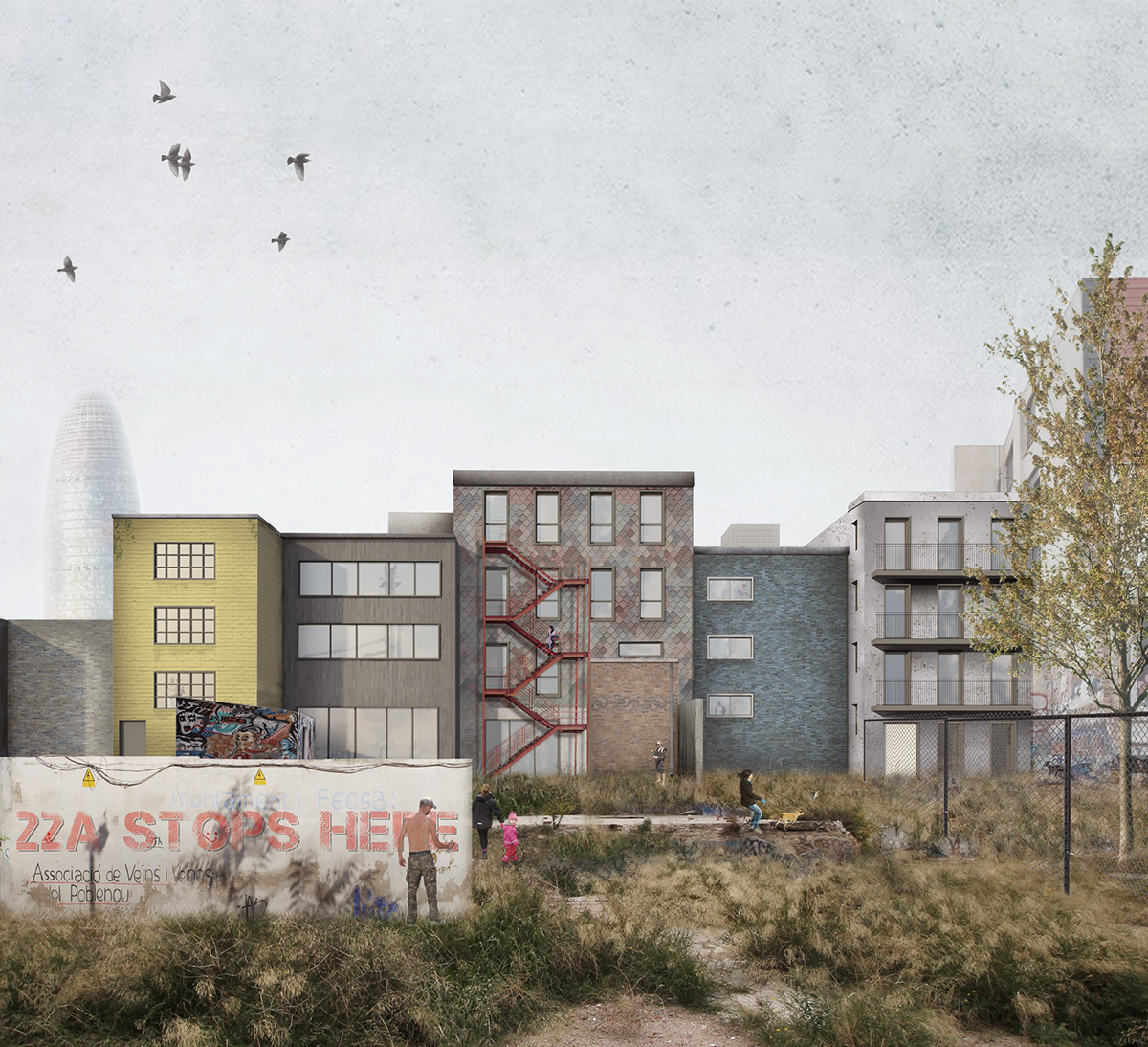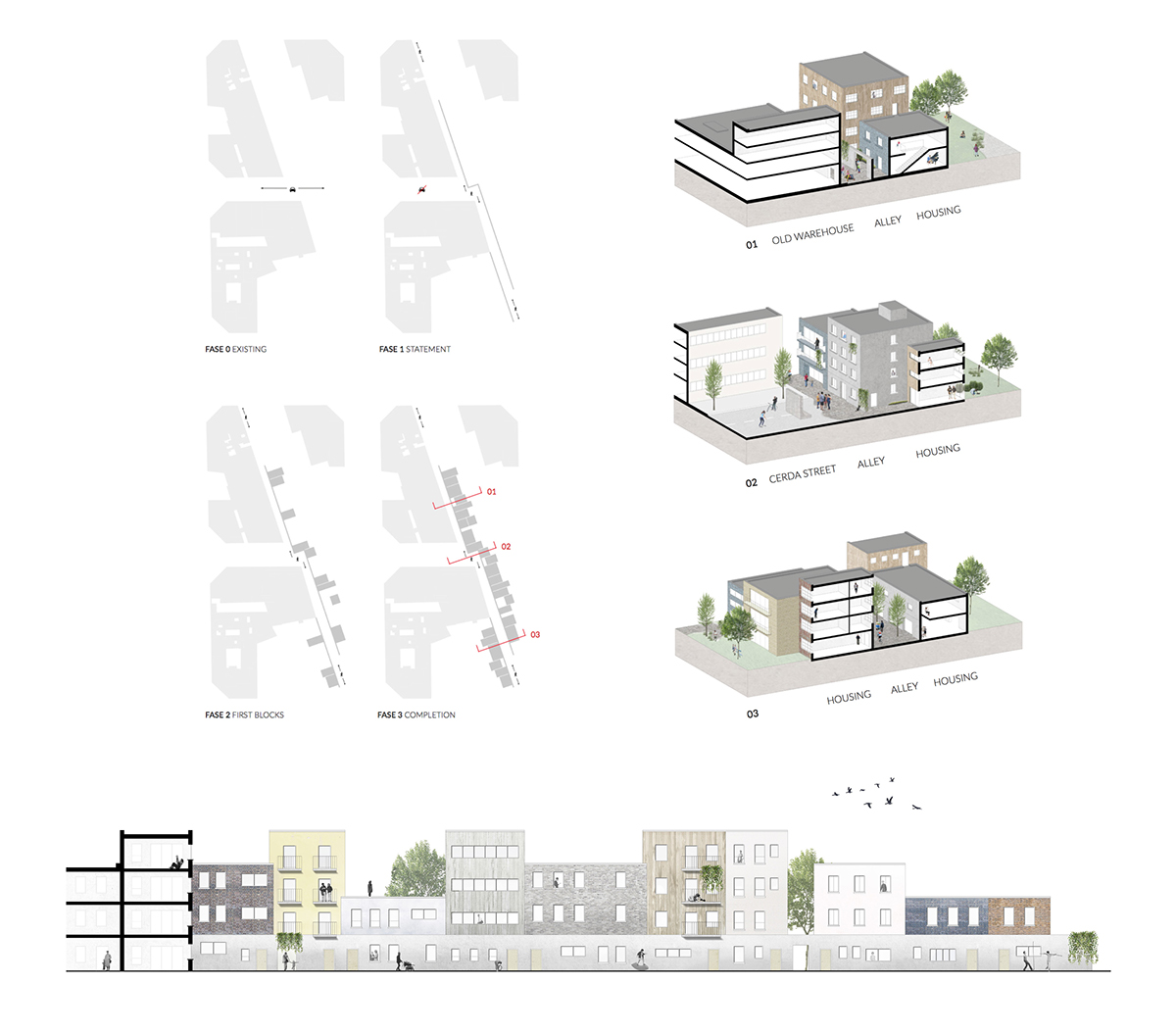THINKING OUTSIDE THE BLOCKS
- An urban vision to strengthen a unique, tilted grid and its local inhabitants against global tendencies. -
_____
SPAIN
Barcelona
Catholic University of Leuven & Institute for Advanced Architecture of Catalonia (IAAC)
Master - Semester I
Nik Vandewyngaerde, Emiel Swinnen, Joachim Mertens, Jaron Vanooteghem
Promotors : Yuri Gerrits, Joris Moons, Guido Geenen
Nowadays multinationals and investors are preying on every part of vacant space that used to be a vibrant, productive and economic hotspots for the cities. The challenge of our strategy shapes the resistance against this typical way of planning, where profit often forms the main idea. By focussing on local small-scale development, circular experiments and the historic identity of an urban tissue can stand strong against tendencies like gentrification.
We don't believe in fully developed masterplans, but an ambition which tries to conceive a way in which a city, on every level and scale, should transform in space and time. How can an urban vision act, so the city can ensure a qualitative environment to work and live in. Interventions and small projects will try to evidence our vision, operating within a flexible timeframe and guaranteeing new perspectives for the future.
An urban transformation is executed in different stages in time. We want to emphasize that projects won’t be developed instantly. Our strategy keeps a goal in mind, where every step takes the project closer to its destination. The transformation of a city is an infinite process without a well- defined start or end. Urban projects should try to be more like a process. Each project aims to react on what’s needed, and because needs change in time, they should be able to interact with each other, adapting to new influences. The completion of one phase can serve as a catalyst for a new one, even between different projects.
To clarify this vision we will focus on a project we have worked on in Poblenou, Barcelona. This part of Barcelona contains a disobedient anomaly in the Cerda-grid survived through time, and will be the supporting backbone of our urban strategy. We aim to highlight the historic tilted grid as an expression of the historic city and the local inhabitants. The resilience of this tissue deserves a chance to survive and to be a surplus for the whole neighborhood.
The new Superilles-plan (merging of multilple Cerda-grid blocks) can serve as a catalyst to unlock the potential energy of this stratification, and to make it resistant to external influences. This can be fulfilled on two levels. Creating statements by doing the exact opposite of Cerda by superimposing the tilted grid back on the Cerda-grid in strategic places. Besides that, interventions should be designed to define the new vacant space, created by shifting mobility to big axes. In this way the historic tissue becomes more armed, more resistant and impossible to neglect in the future.
Publication
Future architecture platform: http://futurearchitectureplatform.org/projects/defd6e25-5689-4f71-9d7b-c964a88a4e45/
Koozarch: https://koozarch.com/2016/11/07/thinking-outside-the-blocks/
_____















